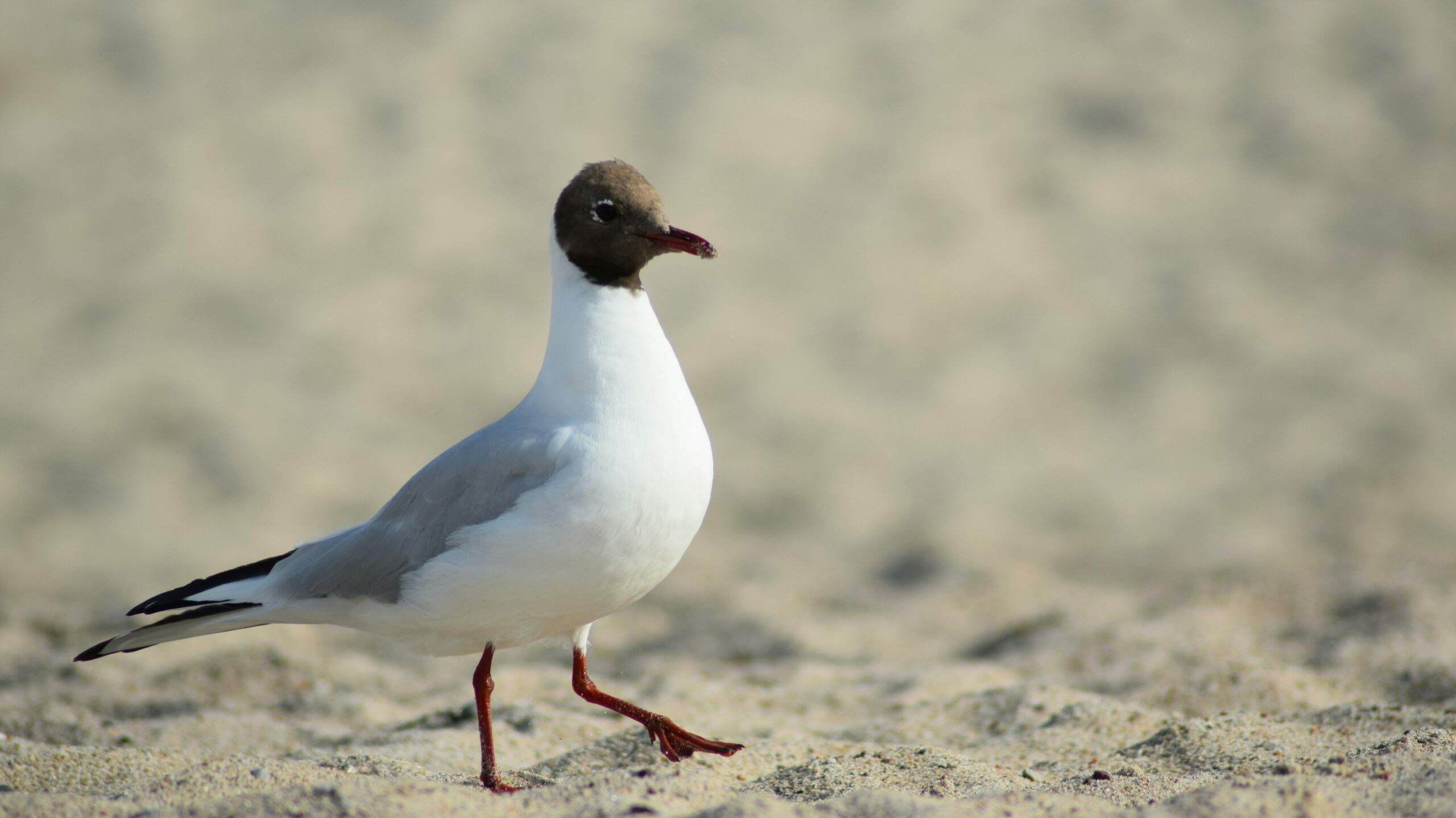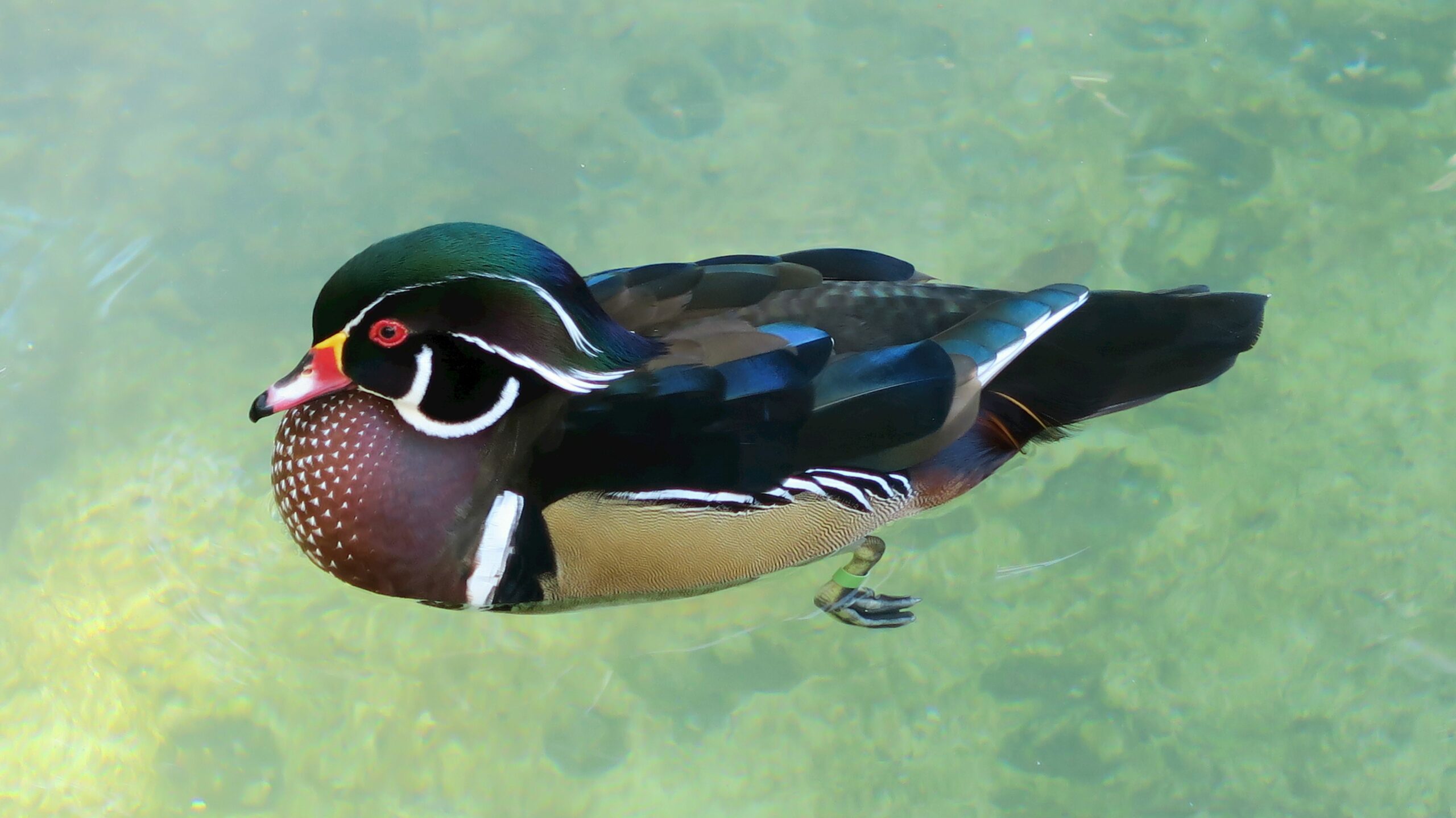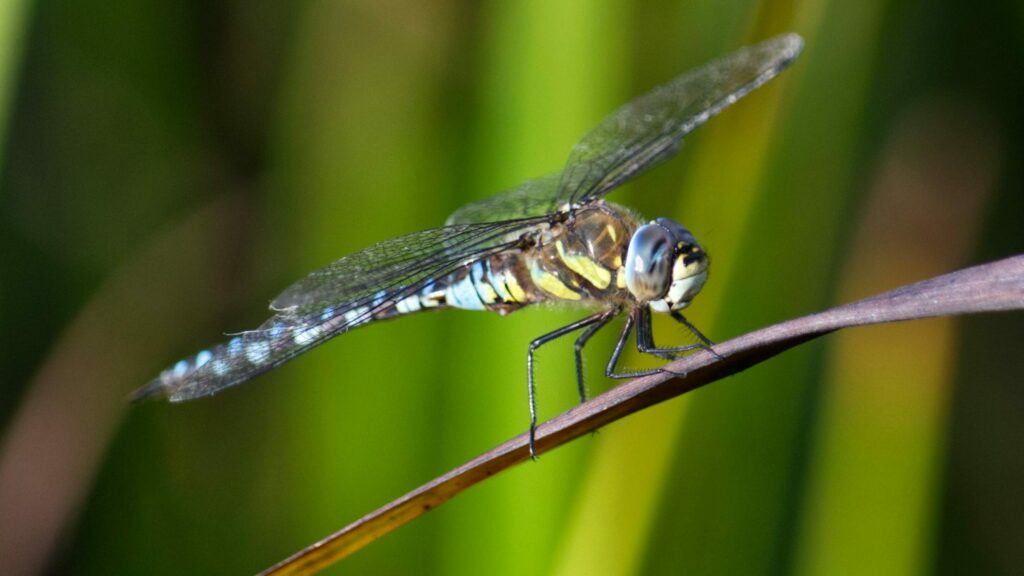Sign 5: A Closer Look ….
Ducks and their friends!
This is a busy spot where parents and their children enjoy feeding the ducks and gulls. (ideally seed and not bread) . Mallard duck, both male and female are the most common food scroungers but occasionally the beautiful male Mandarin duck and their duller grey partners join the crowd.
The Mandarin, as the name suggests, is a non-native species that in the 1970’s could only be found in small numbers at Virginia Water but has now spread more widely in parts of the UK.

The most common Gull that comes to this ‘feeding station’ is the Black headed gull, which if you look closely actually has a brown head, which largely disappears in the Winter. Herring and other species of gull can be seen occasionally.

Occasionally we also see a male Wood duck, that is well decorated but not as exotically as a Mandarin. The Wood duck is an American duck, so is probably an ‘escapee’ from a collection.

Dragonflies and Damselflies
In the Summer the Banded demoiselle is the most common damselfly to be seen. The male has broad blue bands on his wings so they are easily identified.

How to tell dragonflies and damselflies apart?
Damselflies are delicate and smaller than Dragonflies, with eyes on each side of their rectangular head. They have a fluttering flight, with the front and back pairs of wings equal size. When a damselfly is resting, the wings are usually held closed.
Dragonflies are larger and more robust, with eyes that meet in the middle of their head. Their front wings are narrower than their hindwings and when resting, both pairs are held wide open.

